Elaiussa Sebaste Ancient City Guide: Explore a Roman Legacy by the Mediterranean
Located on the southern coast of Turkey, within the borders of Mersin's Erdemli district, Elaiussa Sebaste Ancient City is one of the most special archaeological sites of the Mediterranean with its rich history, impressive ruins and seafront location. This ancient city, which sheds light on the Roman and Byzantine periods, offers a unique travel route for history enthusiasts with its theater, baths, temples and necropolis hidden among olive groves. So, how to get to Elaiussa Sebaste? What to see in Elaiussa Sebaste? Let's explore together 👇
History and Founding of Elaiussa Sebaste
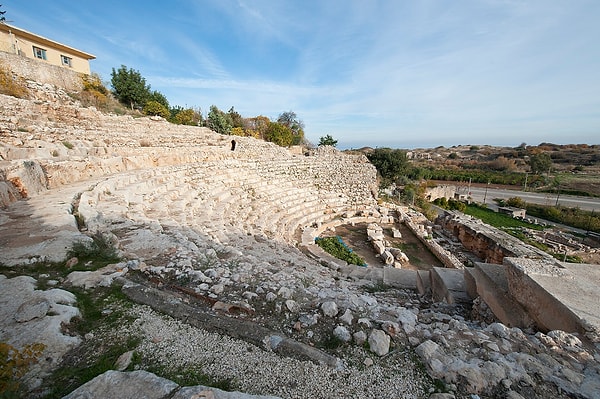
Elaiussa Sebaste derives its name from two different periods: ‘Elaiussa’ means ‘olive grove’ in Ancient Greek and was the city's first name. This region, surrounded by olive groves, was founded in the 2nd century BC. Later, during the Roman Empire, with the support of Augustus, the name ‘Sebaste’ (Latin for ‘dedicated to Augustus’) was added, and the city was rebuilt as an imperial city.
The city's golden age was in the 1st and 2nd centuries AD, during which it became an important trade and port centre. Olive oil, wine and seafood were distributed throughout the Mediterranean world via this port. Elaiussa Sebaste, which was also an important bishopric centre during the Roman and Byzantine periods, was gradually abandoned after the 6th century due to earthquakes, invasions and the silting up of the port.
Mythological and Cultural Significance
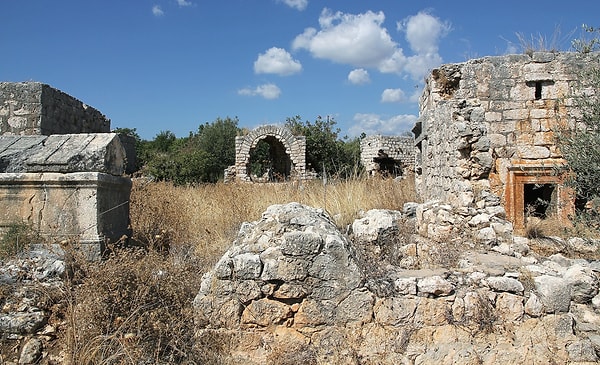
Although there is no direct mythological narrative mentioning Elaiussa Sebaste, it is possible to find traces dedicated to the gods in many temples and religious structures due to the region's intertwining with Hellenistic-Roman culture. Symbols and altars related to the cults of Artemis, Apollo, and Asclepius reflect the religious life of the city. Additionally, the title ‘Sebaste’ indicates that the city was honoured by Roman emperors and held a sacred status.
Historical Structures Worth Seeing in Elaiussa Sebaste

Today, Elaiussa Sebaste welcomes visitors with ruins spread across an area near the coast. The archaeological site contains traces of residential, religious and social life.
Roman Theatre
One of the city's most striking structures is the Roman theatre, which has approximately 23 rows of seating. Dating back to the 2nd century AD, this structure sheds light on the artistic and social life of the period.
Bath Complex
The Roman baths in the city are an important example of Roman engineering, with their hot and cold water sections and waterways. The mosaic-floored sections and water cisterns of the baths are still visible today.
Agora and Basilica
The agora, which was the centre of commercial and social life in the city, features columns, shop foundations and marketplaces. The basilica next to it dates back to the Byzantine period and was used for religious ceremonies.
Necropolis (Cemetery Area)
The rock tombs and sarcophagi scattered around the city reveal the social classes and burial customs of Elaiussa Sebaste. The sarcophagi, especially those decorated with reliefs, are particularly noteworthy.
Aqueducts and Cisterns
The aqueducts and cisterns found in the ancient city reveal the water management system of the region. These structures prove how planned and advanced the city was in terms of engineering.
How to Get to Elaiussa Sebaste
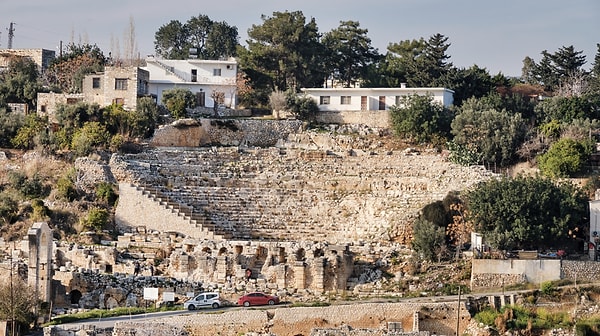
The ancient city is approximately 55 km from the centre of Mersin. It is easily accessible by road. It is located on the D400 highway, between Erdemli and Silifke, within the boundaries of the Ayaş neighbourhood.
Those wishing to travel by public transport can take minibuses or buses from Mersin bus station to Silifke and get off at the Ayaş stop. If you are travelling by private vehicle, you can easily reach the site by following the Mersin-Silifke coastal road and following the signs.
The ancient city is located on the coast, so it can also be reached on foot from the beach.
Entrance Fee and Visiting Hours

Elaiussa Sebaste Ancient City is generally an open-air museum and admission is free. However, as active excavation work is ongoing in the surrounding area, access to some areas may be restricted. It is recommended to visit in the early morning or late afternoon during the summer months, as the area can get quite hot.
Other Places to See in the Surrounding Area
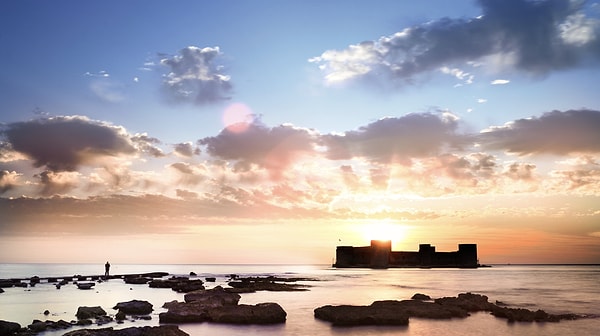
When you visit Elaiussa Sebaste, there are many important archaeological and natural sites worth seeing in the surrounding area:
Korykos (Kızkalesi)
The ancient city of Korykos, located just a few kilometres to the east, and the famous Kızkalesi opposite it are symbols of the region. The castle has a breathtaking view of the sea.
Kanlıdivane
Another impressive archaeological site is Kanlıdivane, located about 15 km away. The ancient ruins surrounding a large sinkhole are a mysterious place that once hosted religious ceremonies.
Adamkayalar
Located on the Ermenek road, this mysterious area, which attracts attention with its giant human reliefs carved into the rocks, dates back to the Hellenistic and Roman periods.
Cennet-Cehennem Obrukları
These natural formations, located about 20 km away, are also associated with mythological narratives. In particular, it is said that Zeus imprisoned the monster Typhon in the Hell sinkhole.
Tips for Visiting Elaiussa Sebaste
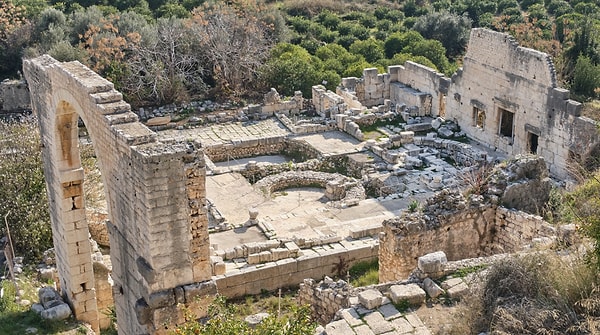
As the region can be quite hot in summer, be sure to bring a hat, sunscreen and plenty of water.
Comfortable walking shoes are recommended as the ancient city site contains uneven stone paths.
Due to the size and complex structure of the area, hiring a local guide, if possible, can make your visit more meaningful.
Elaiussa Sebaste offers an impressive setting for history buffs and photography enthusiasts alike. Especially in the early morning or at sunset, you can capture wonderful shots with dramatic lighting.
Accommodation options are available in small boutique hotels and hostels around the city. If you wish, you can make a more in-depth exploration by planning a route with accommodation rather than a day trip.
Keşfet ile ziyaret ettiğin tüm kategorileri tek akışta gör!

Send Comment